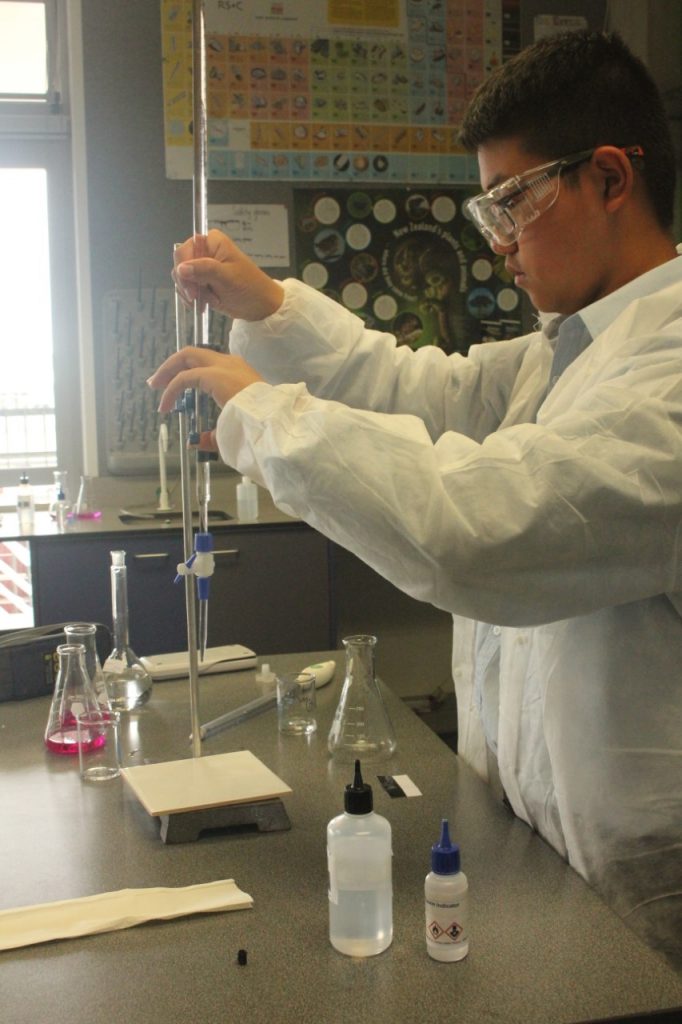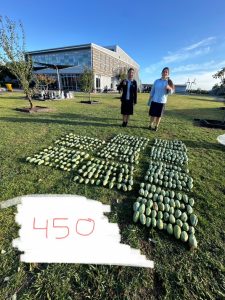Level 2 chemistry students sat their first chemistry internal last week where they had to carry out a practical investigation to calculate the concentration of a consumer product which was white vinegar using quantitative analysis. Their internal assessment was worth 4 credits and was done in three parts.
The first part was the calculations. They were given a problem and had to work out certain things such as the number of moles in the acid, the concentration of acid and the concentration of the base.
The second part of the internal was a practical. Students had to carry out a number of titrations until they got three concordant results which were within 0.2mL of each other. A titration is a technique where a solution with a known concentration is used to figure out the concentration of another solution.
The year 12s poured the base into a conical flask which contained 25mL of diluted vinegar and a few drops of phenolphthalein indicator. The indicator turned a light pink to show the end point of the reaction. They used a burette to measure the amount of base used to titrate the acid and then found the average volume to do their calculations. The students used the known concentration of the base to find the unknown concentration of the vinegar.
For the final part of the internal, students had to write a report which included the aim of the investigation, the method, the data from their titrations, the calculations, a conclusion and a discussion. They had two hours to write this up.
All the best to these students for their results which will likely come out very soon!
Sydney Causer








